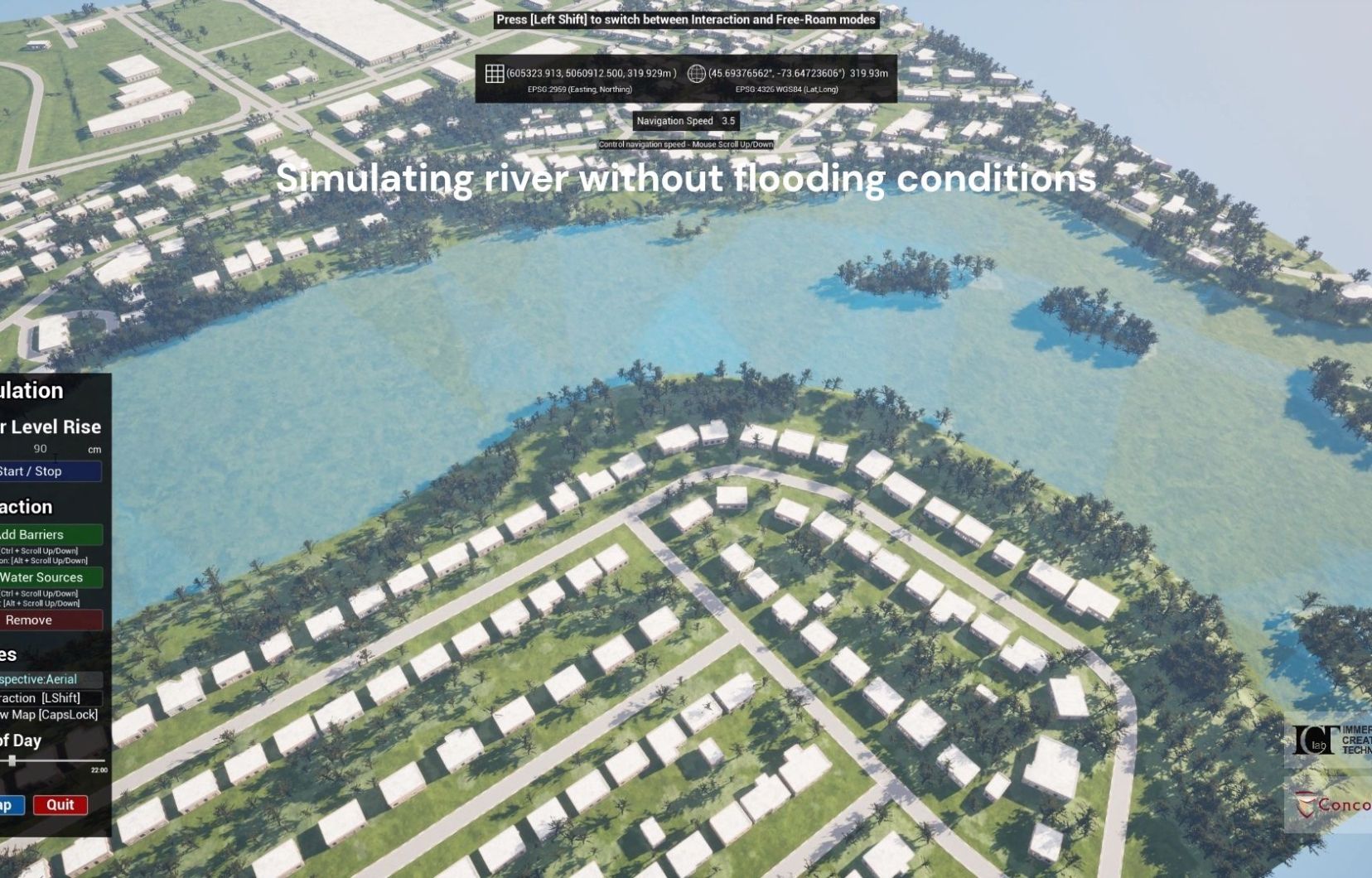It is now possible to predict a few days in advance whether a city will be flooded and to determine which strategies would be most likely to limit the damage, all thanks to computer tools developed by researchers at Concordia University. These tools should make it possible to better cope with extreme weather events, like those that hit Montreal this summer. And although they were developed for Terrebonne, they could be used by all municipalities in Quebec, free of charge.
Often the victim of flooding due to the overflowing of the Mille Îles River, the City of Terrebonne joined forces two years ago with the IT services and consulting company Presagis (now dissolved), as well as at the Immersive and Creative Technologies Lab, led by computer science professor Charalambos Poullis of Concordia University. The municipal administration wanted these two partners to help it find strategies to confront this recurring threat.
The objectives that the computer scientists then set themselves consisted of initially designing a mathematical model that would make it possible to predict the rise in the level of the river a few days in advance. And, secondly, to create a simulation and visualization of what each rise in water level represents on the ground.
Based on hydrological data collected over the last twenty years by eight stations distributed in different locations around the city (and accessible on the Environment Canada website), the ICT Lab team has developed a model of artificial intelligence using graph neural networks, which it named LocalFloodNet, which makes it possible to predict from today’s weather data the rise in water levels three, six and nine days later.
On the other hand, from laser remote sensing data making it possible to generate digital models of terrain, surface and altitude (as well as satellite data which are made available by the government agencies of Canada and Quebec), the ICT Lab researchers have precisely reproduced the entire city of Terrebonne and its river network. “This data allowed us to reconstruct everything: streets, buildings exactly as they appear in the real city, trees in the exact positions they occupy, low vegetation, as well as the structure of the river and maps of the city. “water,” says Mr. Poullis.
This virtual copy of the urban environment — this “digital twin” — can be viewed on the computer from two different perspectives: from a bird’s eye view or by an avatar (a virtual character) who moves on the ground to see up to ‘where the water rises.
A “digital twin”
This digital twin city therefore allows us to visualize the concrete effect that rising water levels can have in the city. If the prediction model indicates that the river should reach 30 cm above its normal level three days later, the simulation shows that the river is overflowing, flooding the banks and moving closer to buildings.
“When we say that the water level will rise by 120 cm, for example, it is difficult to visualize the damage that this will cause. This is why this simulation is so important for deciding on the right preventive measures to take to mitigate the risk of damage,” notes the researcher.
And to determine what the best measures would be, it is possible to insert walls in the digital twin city that act as barriers, like sandbags, to retain water, and move them or orient them differently to see what that’s happening. “The simulation therefore makes it possible to see not only the progress of the water, but also to test scenarios aimed at redirecting the flow in order to protect houses and visualize their effect,” summarizes Mr. Poullis.
These tools were designed for environments near a watercourse, but they can also simulate the consequences of torrential rains or a broken water pipe, like those that occurred this summer in Montreal. “With our tools, we can trigger disastrous scenarios to see which areas will be affected first when the water level rises,” explains the professor.
Although these tools were designed for the City of Terrebonne, they can certainly be used by others, says Mr. Poullis, who strongly hopes that other cities will benefit from them, especially since they can use them free of charge. . “It’s a way for the university to ‘give back’ to the community,” he said.
Other cities will not have to change anything in the AI model. It will simply be necessary to introduce historical data from nearby weather stations into it in order to train it; the model will then be able to make predictions for that city, explains Mr. Poullis, while recalling how “we are fortunate that the federal and provincial governments provide this data for free.”
“Cities will be able to learn things they didn’t know. They will be able to simulate extreme scenarios, like a rise of three meters, for example, and see what happens, see which areas will be affected first. They will thus be able to save a lot of time, as the model can predict up to nine days in advance, and plan preventive measures,” he emphasizes.
The tools developed by the Concordia team were published on August 10, 2024 in the journal Scientific Reports from the Nature group.
This content is produced in collaboration with Concordia University.
